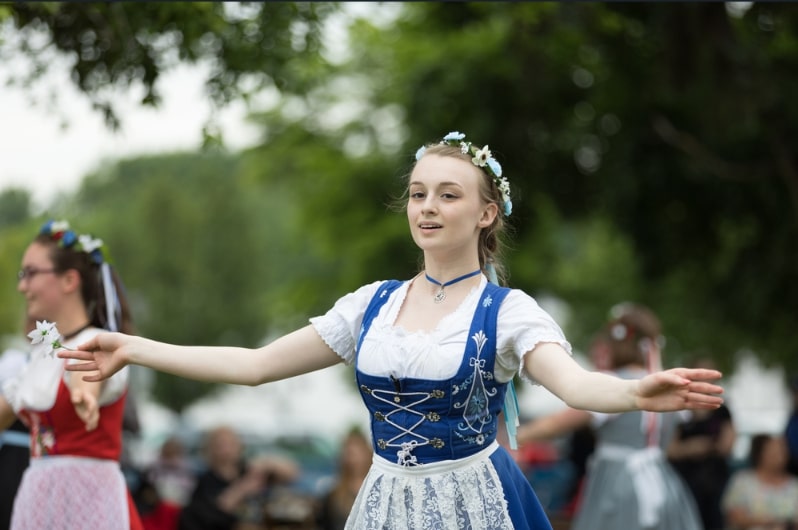Introduction: In this article – the second of a two-part series – Katie Rebecca Garner describes German American history, religion, and language, to help with your research on German American ancestors. Katie specializes in U.S. research for family history, enjoys writing and researching, and is developing curricula for teaching children genealogy.
In the first article, we learned about German American naming patterns. We will conclude this series by learning more about the history, religion, and language that the Germans brought to America.

Photo credit: https://depositphotos.com/home.html
History
Germans have migrated to America since colonial days, before either land was its own country. Before 1871, Germany was a group of separate principalities, kingdoms, and duchies. Some early German emigrants went to England, from whence they were sent to the colonies. Some of the German-speaking immigrants at this time came from German-speaking areas of Switzerland, Holland, and Alsace (now part of France).
Many assume that most colonial German immigrants came for religious reasons. This was only true for the Anabaptists, who were being persecuted in Germany. The Lutheran and Reformed churches were part of the established church in Germany, so their members weren’t being persecuted. Immigrants of those faiths came to America seeking economic opportunities.
It is also commonly assumed that many Germans worked as indentured servants due to being unable to afford passage. German indentured servants aren’t likely to be your ancestors because very few had posterity. Many of the German immigrants came as families. If a family couldn’t afford passage, a few family members could indenture themselves for the whole family.
Religion
Church records are useful in researching German American ancestors, so knowing what denomination your ancestor was part of is helpful. For German Americans, it is also beneficial to know what churches were near where your ancestors lived.
German Americans went to church together, attending German services run by German pastors who kept their records in German. Most Germans were Protestant and Anabaptist, including Lutherans, Reformed (United Church of Christ), Moravians, Amish, Mennonites, and other smaller sectarian groups. Very few German Americans were Catholic.
There was a shortage of German clergy until the 19th and 20th centuries. Because of this, many pastors each served multiple congregations. They also only held communion twice a year. Due to the scarcity of visits from clergy, some families would have their children baptized by the next clergyman that came by, whether or not he was of their preferred faith. This resulted in fluid church membership in the 18th and early 19th centuries, with families being recorded in multiple churches. I have seen this in researching my own Garner line. Knowing the history of your ancestor’s congregation and its parishes and pastors is helpful in your research.
It was common for two or more congregations to share a church building. A shared church building was known as a union church. Reformed and Lutheran faiths got along well and tended to share union churches. So did the various Anabaptist faiths with each other. Some of these union churches kept one record book for all the churches therein. Knowing the practices of your ancestor’s congregation will help you know where to look for records.
Language
German Americans continued speaking German until WWII. After that, mainly the Amish and Mennonites continued speaking German. The German dialect spoken by German Americans was Pennsylvania German or Pennsylvania Dutch, while the written language remained High German.
Of course, the Germans in America would have had to sometimes interact with their English-speaking neighbors. Naturally, the records recorded by the English speakers of the German population would have been affected by the language differences. English and German pronunciations differ; understanding this can help in researching your German American ancestors.
Consonants commonly interchanged are B and P; C, G, and K; D and T; V and P; W and V; and D, T, and Th. The two dots above a vowel are the German equivalent of the silent E and change the vowel’s sound.
The spelling variations this results in affect the spelling of our ancestors’ names and the spelling of the German places they came from. This can cause a researcher to find a place name in a record in the U.S. but fail to find it on a modern map.
Applying the letter interchanges can help in this case – for example, the place Wutzkow might have been spelled as Vitsgow.
Do you have German American ancestors? Now that you have a better understanding of what you could find, check out GenealogyBank’s Historical Newspaper Archives for records of them.
Explore over 330 years of newspapers and historical records in GenealogyBank. Discover your family story! Start a 7-Day Free Trial
Note on the header image: German and American flags. Credit: https://depositphotos.com/home.html
Related Articles:
- German American Culture & History (part 1)
- Common German Last Names & Their Meanings
- Common German Holiday Traditions
- German Wedding Traditions and Customs
- Don’t Speak German? You Can Still Use German-Language Newspapers for Genealogy
Resources:
- https://www.familysearch.org/rootstech/session/german-research-for-the-everyday-american
- https://familytreewebinars.com/webinar/the-voyages-of-our-german-immigrants/?search=german
- https://familytreewebinars.com/webinar/get-with-the-times-german-newspaper-research/?search=german
- https://familytreewebinars.com/webinar/the-palatine-immigrants-tracing-and-locating-18th-century-german-immigrants-online/?search=german
- https://familytreewebinars.com/webinar/searching-for-a-pennsylvania-german-ancestor/?sortby=newest&search=german
- https://familytreewebinars.com/webinar/is-this-the-end-taking-your-german-brick-walls-down-piece-by-piece/?sortby=newest&search=german
- https://familytreewebinars.com/webinar/german-names-and-naming-patterns/
- https://likewolf.com/german-american-food-tradition-of-good-taste
- Buiter, A. S. (2020). Tracing Immigrants through the Port of New York: Early National Period to 1924. New York Genealogical and Biographical Society.
- Freilich, K. H. (2016). NGS Research in the States Series: Pennsylvania (B. V. Little, Ed.; 3rd ed.). National Genealogical Society.
- DeGrazia, L. M. (2013). NGS Research in the States Series: Research in New York City, Long Island, and Westchester County (B. V. Little, Ed.). National Genealogical Society.
- Shawker, P. O. (2008). NGS Research in the States Series: Maryland (K. Freilich & A. C. Fleming, Eds.). National Genealogical Society.
- Clint, F. (1976). Pennsylvania Area Key (2nd ed.). The Everton Publishers, Inc.
